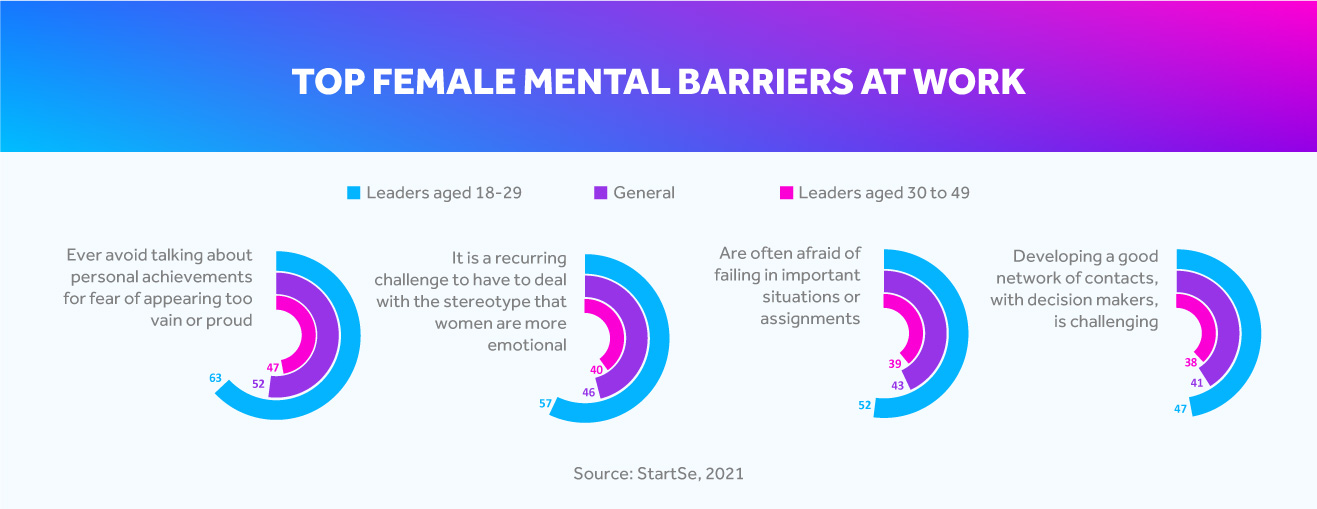Female Leadership: a great power in the market
 Zoox Smart Data - 11 de March de 2022.
Zoox Smart Data - 11 de March de 2022.
For hundreds of years, many activities and roles have been considered feminine or masculine. Even today, biological characteristics are taken into consideration when it comes to determining responsibilities, and many socially instituted thoughts are contested by women who seek a place in the work market.
Gender inequality in senior positions
Without a voice and financial independence, there was no possibility of female advancement. Culturally, this whole structure has been established as a standard, which often sabotages women into thinking they are not capable enough to occupy higher positions.

Women at the top: 6 benefits
The female leadership has, besides the ideal of diversity and inclusion on its side, data that show how different worldviews can make companies' results take off.
1. Higher operational results
According to a McKinsey study, businesses with more women in leadership, when compared to the industry average, experience up to 48% higher operating results and 70% revenue growth.
2. Improvement in core KPIs
Teams with diversity and strong female participation experience significant improvements in productivity, creativity, as well as higher profitability and improved business reputation, according to the UN-linked Women in Business report.
3. Leaders drive leaders
The occupation of this type of position by women is also a way to give them more representation.
Women leaders in important positions become inspiration and reference points for other women and help them believe that they can get where they want to go.
4. Breaking Standards
When a woman assumes a leadership position, her attitudes can demystify stereotypes and behaviors socially imposed on women for other employees.
This rupture with the cultural pattern is capable, even, of educating the other collaborators.
5. Great Adaptability
6. Holistic vision
According to a study by the Technical University of Aachen and the University of Koblenz and Landau, women's brains are no more multitasking than men's - which is a thought that has been socially reproduced for quite some time.
In fact, culturally, women have had more time to learn to reconcile tasks such as caring for the home, children, husband, and, later on, professional life, and have therefore cultivated an ability to quickly shift focus between tasks.
According to this study, by being able to analyze several variables simultaneously and assimilate details, holistic vision is improved. In leadership positions, this ability can provide more efficiency and proximity to the team led.
3 tips to achieve leadership and professional success
Almost 1 in every 3 women are clear about their career goals, but still don't know what they need to do to achieve those goals, according to a StartSe and Opinion Box survey.
Although 39% have a clear vision of where they want to go, 29% say they have a clear vision but don't know how to get there. Meanwhile, 32% of respondents said they don't put much thought into planning their careers.
However, recognizing the existence of these obstacles is the first step to overcoming them. So here are some tips for women to accelerate their careers.
1. Find inspiring women!
It is essential to feel inspired in order to be able to face any mental or social barriers imposed on women. Finding successful role models who are or have been in leadership positions can be the extra push you need.
When observing famous people in your country or worldwide, be sure to look for local or nearby examples as entrepreneurs, leaders or co-workers with excellent skills and enriching stories.
2. Build a network
Many women end up self-sabotaging or giving up on other accomplishments because they don't have a reliable network to exchange ideas, learnings, and fears.
Of course, you don't need to create relationships only with other women; what really matters is to strengthen your network so that it is diverse and formed by people who will help you exchange experiences.
In order to reduce the abysses of inequality in the labor market, it is fundamental that we recognize and believe in the potential of women.
3. Plan your career
To reach leadership positions you must have the necessary competence. That is, to invest in the development of skills - be them management, hard or soft skills - and to have specific experiences.
Thus, planning is fundamental to know where you want to go and how to get there. When planning your career goals, be realistic but also ambitious, think about the steps you need to take to get where you want to go, outline short, medium, and long-term goals and objectives, and direct your efforts towards that.
"When we talk about career planning, we feel the echo of some mental barriers. Fear of talking about achievements and fear of failure keep us from dreaming big and, more than that, from planning to achieve our dreams. Encouraging the women around us to talk about goals and draw up plans is an important agent for change so that we can guarantee the professional future we want" , Daniela Schermann, Head of Marketing, for StartSe and Opinion Box's Female Leadership research
Therefore, include the search for knowledge as a central point of your career plan - through courses, a constant update on the market and other professional development opportunities.
With a well-designed plan - while remaining flexible - it is easier to face the challenges that may arise.
As you can see, female leadership is fundamental not only for a fair society, but also for a more diverse and effective corporate environment. On one hand, the female struggle for gender equity has been recognized and widespread in numerous sectors, but it is still necessary to increase the dialogue on this topic so that there is more and more understanding and actions that recognize the power of diversity at work and beyond.






Comments